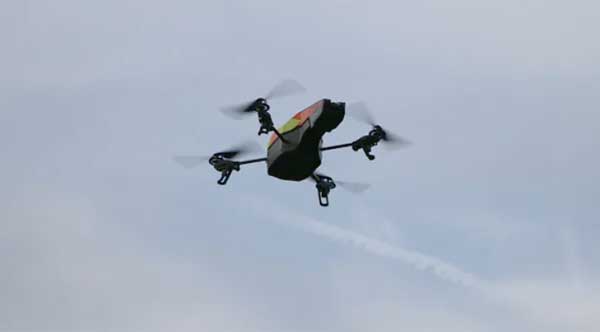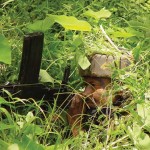
In the article in these columns titled ‘Delimitation and Elections in J&K’ covering the Prime Minister’s meeting with top J&K political leaders on June 24, it was brought out that Pakistan’s ISI will use its terrorist proxies and sympathizers both sides of the border to foment terrorism in J&K cashing on disgruntled elements like the Gupkar Gang opposed to delimitation and removal of special status of J&K. It was also brought out that China supports Pakistani terrorism and the ISI and the Sikhs For Justice (SFJ) are already in league with Chinese intelligence. Apparently, the terrorists were already primed to signal resentment against the high level political musings in Delhi on June 24.
In the early hours on the morning of June 27, two drones dropped incendiary devices on the India Air Force (IAF) base in Jammu. One improvised explosive device (IED) exploded at 1.30 AM and the other one after 15 minutes. One blast ripped through the roof of a building and the second one exploded on ground. Both were low intensity blasts. The IAF tweeted: “Two low intensity explosions were reported early Sunday morning in the technical area of Jammu Air Force Station. One caused minor damage to the roof of a building while the other exploded in an open area. There was no damage to any equipment. Investigation is in progress along with civil agencies.”
The terrorist target apparently was the IAF helicopter hangar. The drones were fitted with GPS to pinpoint the target location. However, the IEDs missed the target though exploding in proximity of the hangar. Two IAF personnel have reportedly received minor injuries. Two suspected terrorists have been apprehended and are being interrogated. Teams of the National Investigation Agency (NIA) and Bomb Disposal Squad of the National Security Guard (NSG) too are undertaking investigations at the site of the terror attack. Concurrently, one terrorist has been caught with a 5-kg IED in Narwal area of Jammu.
This is the first instant of terrorists using drones for attacks in India although Pakistan has been using drones for supply of arms and ammunition to terror networks in Punjab and J&K. In the instant case, the IED’s missed the target (helicopter hangar) but we should expect refinement in subsequent drone terror attacks. Terrorist organizations have been using drones elsewhere, especially the ISIS in Iraq-Syria, Hamas against Israel, ISKP-Taliban in Afghanistan and Houthis in Saudi Arabia. These terrorist organizations have been largely using commercial-off-the-shelf (COTS) drones for terror attacks, but not all.
Interesting Russia’s KUB-BLA ‘kamikaze’ drone can destroy remote ground targets from a distance of up to 64 km away by blowing itself up like a suicide bomber. The 37 inches long, 47 inches wide and 6.5 inches high KUB-BLA can carry a 3-kg payload and fly for 30 minutes at the top-speed of 130 km/h. it may be assumed that China and Turkey already have similar drones like the KUB-BLA or are developing them, which can be expected to land up in hands of terrorists attacking India.
Notably in July 2017, a Russian drone carrying a thermite grenade blew up billions of dollars worth of ammunition last when it struck the Balakliya military base in Eastern Ukraine – 96 kms from the Russia-Ukraine border. The thermite grenade set off a series of titanic explosions in what was described as the largest explosions in recent history.
Terrorists can use drones for surveillance and monitoring, jamming communications as cyber-copters, communication relay, spraying virus or gas from single or multiple drones, bomb or kamikaze attacks, downing aircraft, swarm attacks and even assassinations. Recall on July 14, 2018, quantity 10 Chinese DJI Phantom 4 PRO drones were seized from a passenger at Bengaluru International airport. These drones have the capability to fly at 6,000 metres with half kg payload, are difficult to detect, can live-stream hi-definition images and have ‘Tap-by-Use’ feature which enables the drone to lock-on and track an individual in a crowd.
Compared to larger UAVs, small drones are much more difficult to detect as they need little space to take off. Over and above detection, is the problem of intercepting and bringing down a terror drone without activation its lethal load. India has been subjected to terrorism for almost three decades now. Terrorists, especially the state sponsored ones, are looking at new methods assisted by technology to strike us. There is enough on record cautioning India that drone attacks by terrorists are around the corner. Even now, it would be naïve to think that such attacks would be limited to J&K or at best also in Punjab.
Yet we have been dragging our feet in arming our security forces against the small-sized drones that are employed by terrorists globally. A few simultaneous drone attacks in different parts of the country would set in motion the mad rush to import anti-drone weaponry for arming the security sector. This ironically has become our norm. We need to focus on drone terrorism and counter measures much more.
In 2009, an attempt was made to deliver drugs to prisoners using a drone in a UK prison guarded by a 50 feet high electric fence. In 2011, Rezwan Ferdaus, an al-Qaeda affiliate, planned to launch an attack on the Pentagon and Capitol buildings using a remote-controlled drone laden with explosives but the plot was intercepted by the FBI. In 2012, criminals piloted a $600 remote-controlled quad-copter over a Brazilian prison to deliver cell phones to the prisoners. Prisons in J&K would be a target for terrorists employing drones to drop incendiaries to divert attention in conjunction storming them.
Finally, J&K is likely to witness uptick in terror attacks in all forms with Pulwama style car bombings and terrorists using drones while the delimitation exercise is on and elections are round the corner. The Delimitation Committee itself will be a lucrative target, as would be election rallies. Terrorist are developing new types of explosives experimenting with commercially available products like fertilizer and chemicals, coupling them with radioactive-like material to increase destructive power. Toxic radioactive agents can be paired with conventional explosives and turned into a radiological weapon.
Future surprises can hardly be discounted, with China and Pakistan subjecting India to state sponsored terrorism using proxy forces. We need to be prepared for cyber-terrorism and CBRN attacks as well. Preparing for higher terrorist threat levels would be prudent.





Israel is the only country that has successfully dealt with Terrorism; how have they doe it? NOT by the Govt or the security forc alone countering it, but by each and every Israeli Citizen being at the cutting edge of the anti terrorism effort. Can/will such a paradigm shift in the Indian national psyche ever occur… Well it has to… Jai Hind.
An informative article: enjoyed reading. Hope Our establishments wake up soon and act in a meticulous manner.